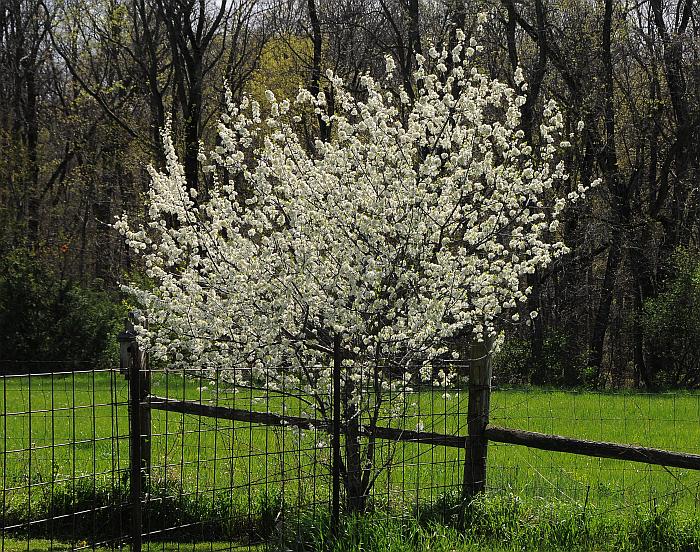Prunus americana Marshall
Wild Plum

Native
CC = 4
CW = 5
MOC = 63
© SRTurner
Prunus americana MarshallWild Plum | |
 |
Native CC = 4 CW = 5 MOC = 63 |
© SRTurner |
|
Family - Rosaceae Habit - Shrubs, 2-5 m tall, or less commonly small trees to 8 m tall, usually strongly suckering. Stems - Twigs usually short-hairy, occasionally glabrous, producing pseudoterminal winter buds (these usually in a cluster of 2 or 3 at the tip). Leaves - Alternate but sometimes appearing clustered at branch tips. Petioles 4-19 mm, usually hairy only on the upper side, occasionally glabrous, usually lacking glands, but occasionally with 1 or 2 disclike glands near the tip. Leaf blades 5-11 cm long, 2.0-5.5 cm wide, mostly 2 or more times as long as wide, elliptic to broadly elliptic or obovate, rarely ovate, flat to slightly concave at maturity, not keeled, angled or infrequently rounded at the base, abruptly tapered at the sharply pointed tip, rarely, merely angled, the margins coarsely and doubly toothed, the relatively straight teeth sharply pointed, lacking glandular tips, the upper surface glabrous to appressed-hairy, the undersurface glabrous except along the midvein or occasionally glabrous or more evenly short-hairy. Inflorescences - Produced before or as the leaves develop, umbellate clusters of 2-5 flowers per bud, the flower stalks 8-20 mm long, glabrous or less commonly hairy.
Flowers - Hypanthium 2.5-5.0 mm long, conic, usually glabrous but occasionally hairy. Sepals 2-4 mm long, spreading to reflexed at flowering, lanceolate to ovate, the margins hairy, entire or sparsely glandular-toothed toward the tip, the inner surface densely woolly, the outer surface glabrous to moderately short-hairy. Petals 7-15 mm long, oval to oblong-obovate, white.
Fruits - Pomes 15-30 mm long, subglobose to ellipsoid, shallowly longitudinally grooved on 1 side, the surface red, orange, or yellowish orange, glabrous, somewhat glaucous, the fleshy layer well-developed, the stone ovoid, strongly flattened, the surface veiny or slightly wrinkled.
Flowering - April - May. Habitat - Streambanks, pond margins, upland forests, glade margins, pastures, fields. Also cultivated. Origin - Native to the U.S. Lookalikes - Closely resembles other members of the genus, especially P. mexicana. Other info. - This species occurs across most of Missouri, though it is apparently uncommon in the northwestern portion of the state. It is common throughout much of the continental U.S., especially toward the north and east. In Missouri it is one of the earliest native woody species to flower, and it is often cultivated as an ornamental or for wildlife. Photographs taken near Labadie, Franklin County, MO, 4-12-2019 and 8-5-2020 (SRTurner). |